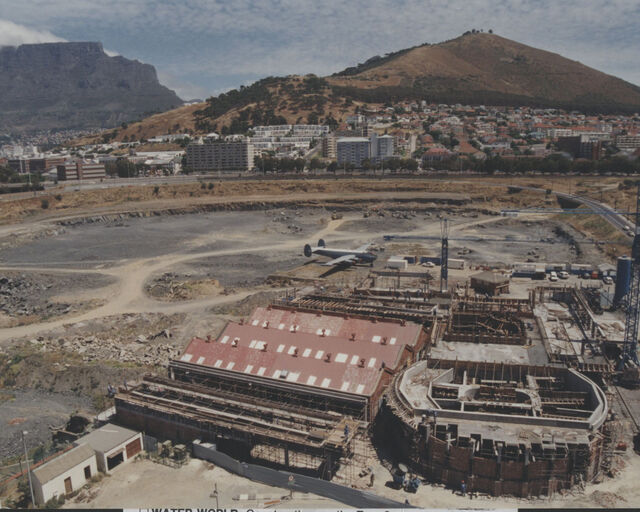Bob the turtle's rollercoaster rehabilitation
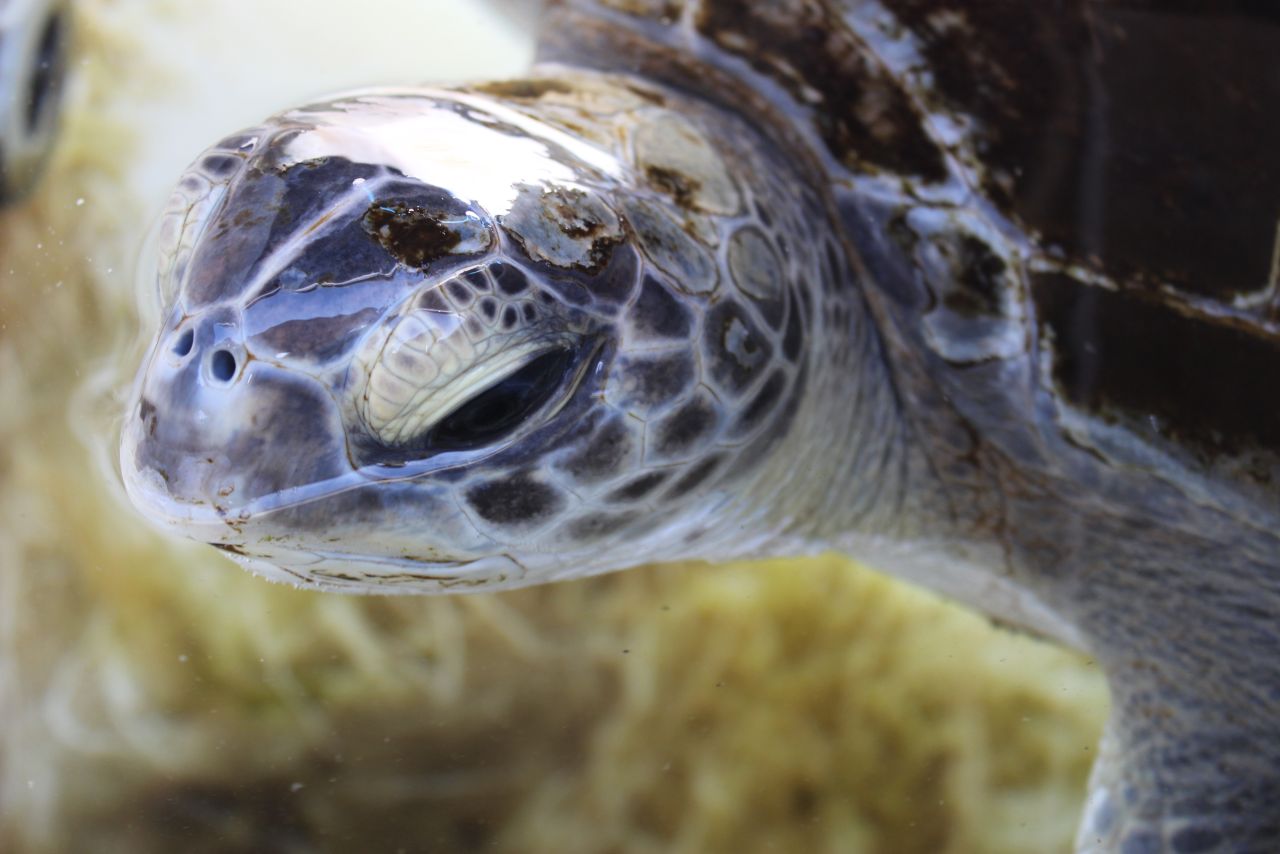
On 6 November 2014, Lieze Swart of Oceans and Coasts found an injured, sub-adult green turtle on a beach in the De Hoop Nature Reserve, about four hours drive from Cape Town. The injured animal was brought to the Aquarium by Darrell Anders from the Department of Environmental Affairs, and what followed was an intensive period of rehabilitation, with some surprising twists.
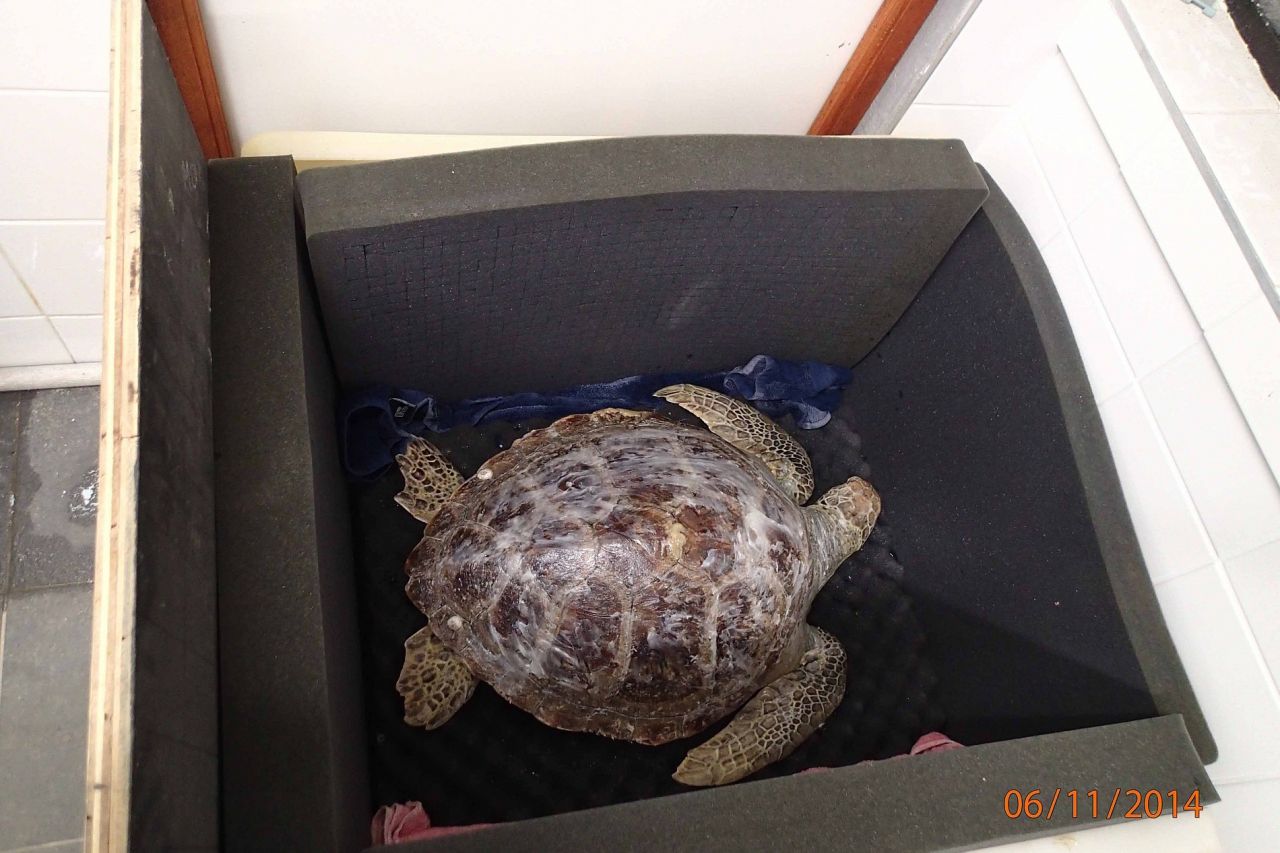
On arrival, the turtle weighed 16.6kg, and had severe bruising and a possible fracture of the bottom shell (or plastron), with loss of scales and exposed bone. It was also positively buoyant (or floating), a condition which can occur owing to a number of reasons.
As we already had two other green turtles in the rehabilitation programme, we needed to name the newcomer.
Well, Bob became Bob because of the fact that the turtle used to “bob” around its tank. It is difficult to tell whether Bob is a male or female, because at its current size and age the sexual dimorphism (long tail versus short tail) that adult green turtles display, has not yet developed.
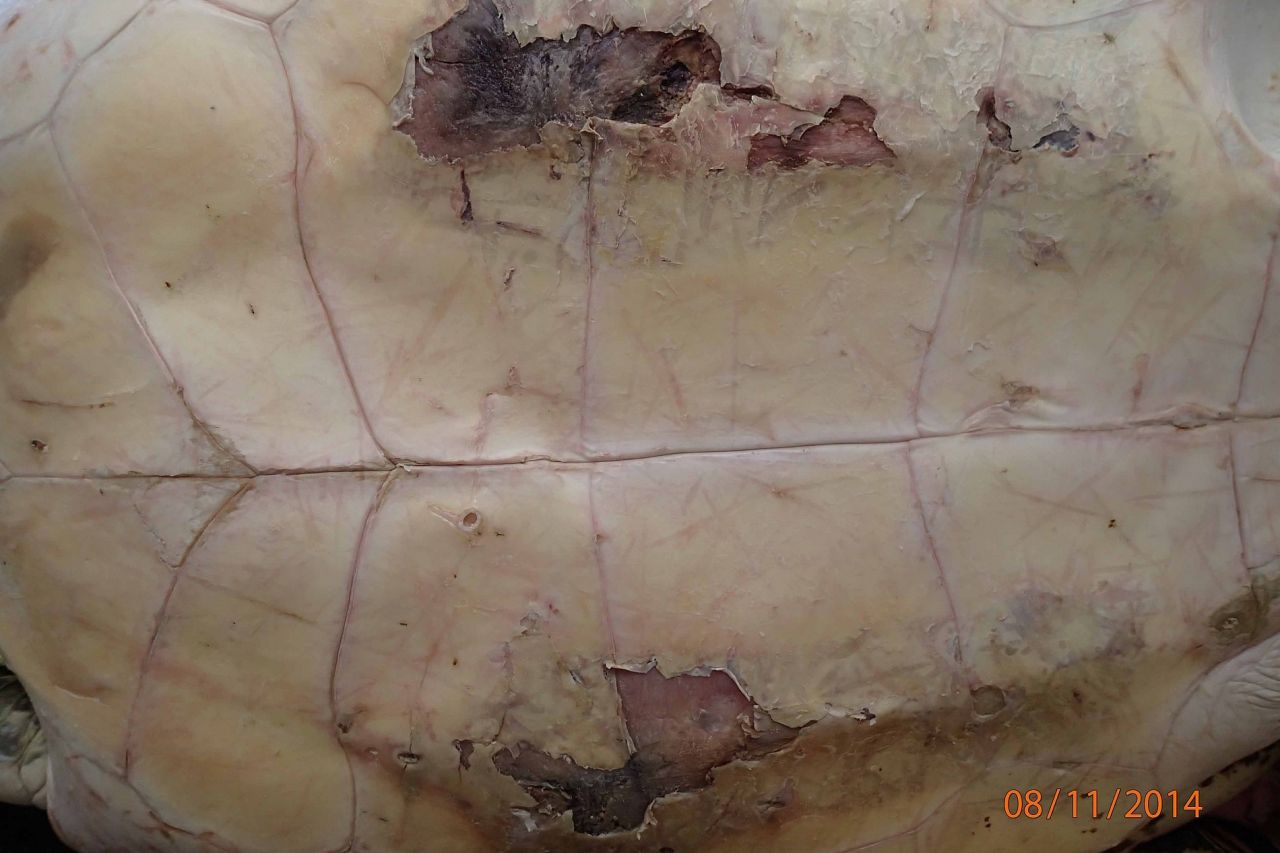
The day after its arrival, Bob was given a full examination including X-rays and blood sampling. The wounds were cleaned and Bob was slowly rehydrated over several days while being given antibiotics and pain relief. Bob’s rehabilitation journey had started!
After spending the night "dry-docked" in a padded pen, Bob was moved into a pool with cool, fresh water. This was slowly heated up to about 23°C over a couple of days and salt water was added gradually. The freshwater helps with rehydration and to kill off any algae, mussels or other external organisms that are growing on the shell.
Bob seemed to do very well in this pool, swimming, breathing and behaving normally, but not yet eating.
The fracture site was cleaned and bandaged on a daily basis. We had to get creative as we needed the bandage to be waterproof and the most successful method we came up with was TegadermTM covered by layers of overlapping duct tape.
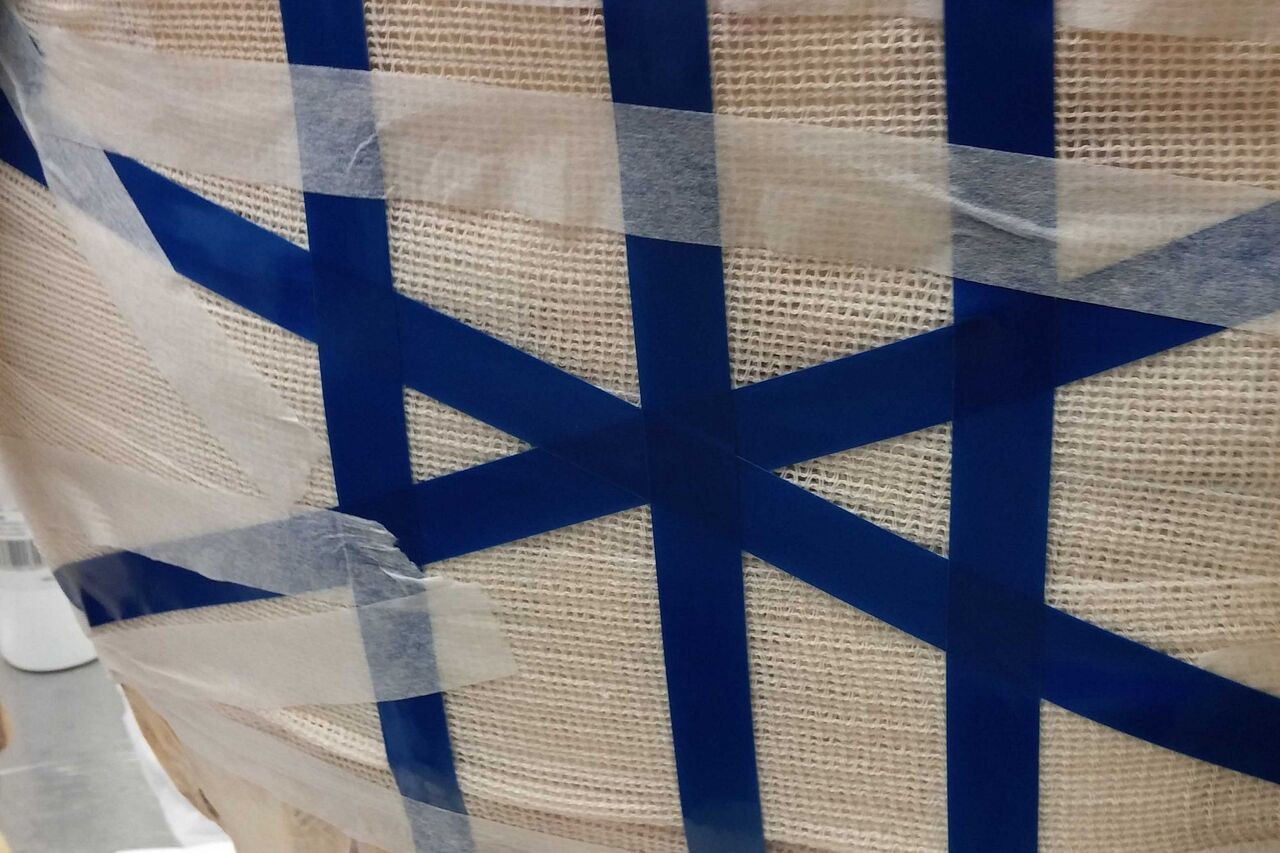
Then, Bob’s condition suddenly deteriorated. The turtle was starting to show severe abnormal neurological signs and having difficulty breathing. It continually circled to the right and had lost sight in both eyes. This necessitated another period in the "dry dock".
Over the next few weeks, Bob required intensive care with tube feeding, daily wound care and lots of fluids to help maintain hydration while out of the water. The fracture had developed an infection and it was suspected that bacteria had spread to the blood and caused an inflammation of the brain (encephalitis). A blood culture was performed, which dictated a change in medication.
Wild turtles can suffer from blood flukes (parasitic flatworms). These parasites are capable of causing abnormal neurological signs, so as a precaution, Bob was also given deworming treatment.
The daily tube feeding was a delicious blend of Hills A/D, spirulina, Vitamin C and Darrows. Green turtles have a “U-bend” at the bottom of the oesophagus, which makes it difficult to pass a tube directly into the stomach. To prevent regurgitating and possible suffocation, Bob had to be kept upright for at least 30 minutes after tube feeding.
Bob was taken for a CT scan to get better images of the fracture site and to identify any other fractures that conventional X-rays might have missed. (We would like to extend a big thank you to Tuft and Co Radiologists who performed the scan and interpreted the images for us.)
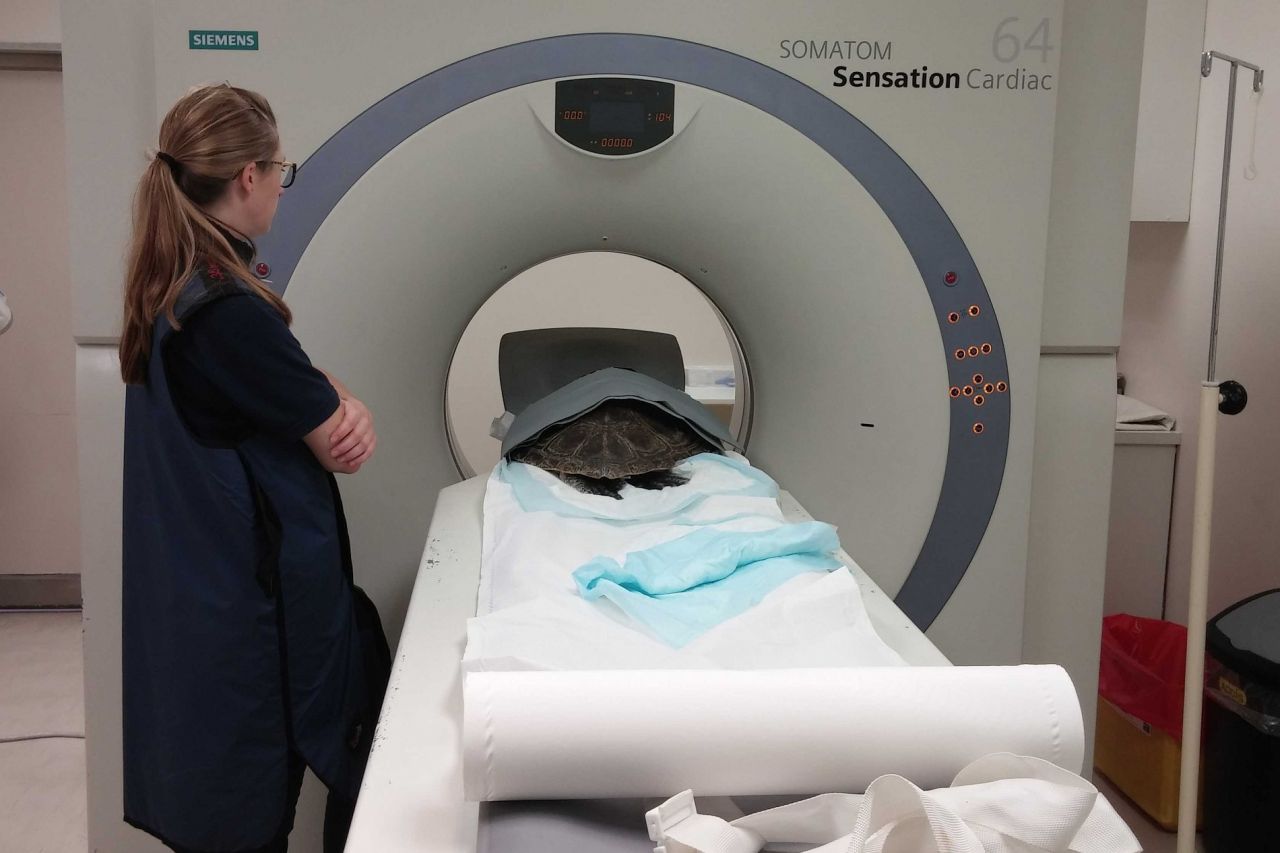
Bob began to lose weight, so more sea lettuce/spinach, white mussel, hake roe and pilchard fillet were added to the tube feed mixture.
We also replaced the bandages with “Bonewax” – an inert wax compound used in bone surgery. This sealed the fracture site relatively well and prevented water from seeping in. We started seeing new bone growth underneath the necrotic (dead) bone and healthy tissue started to close the fracture site.
After three weeks of being out the water, the fracture site started to look much healthier and Bob was moved back into a pool permanently. The turtle only had to be removed for about an hour a day to be tube-fed, have the wound cleaned and the bandages changed.
On 23 December, Bob’s weight reached its lowest point of 13.9kg, but then slowly started to increase a little every day.
On 3 January, Bob started sleeping on the bottom of the pool, indicating that the buoyancy issue had been resolved and also started passing solid faeces.
The wounds were healing well, but Bob still seemed to be completely blind.
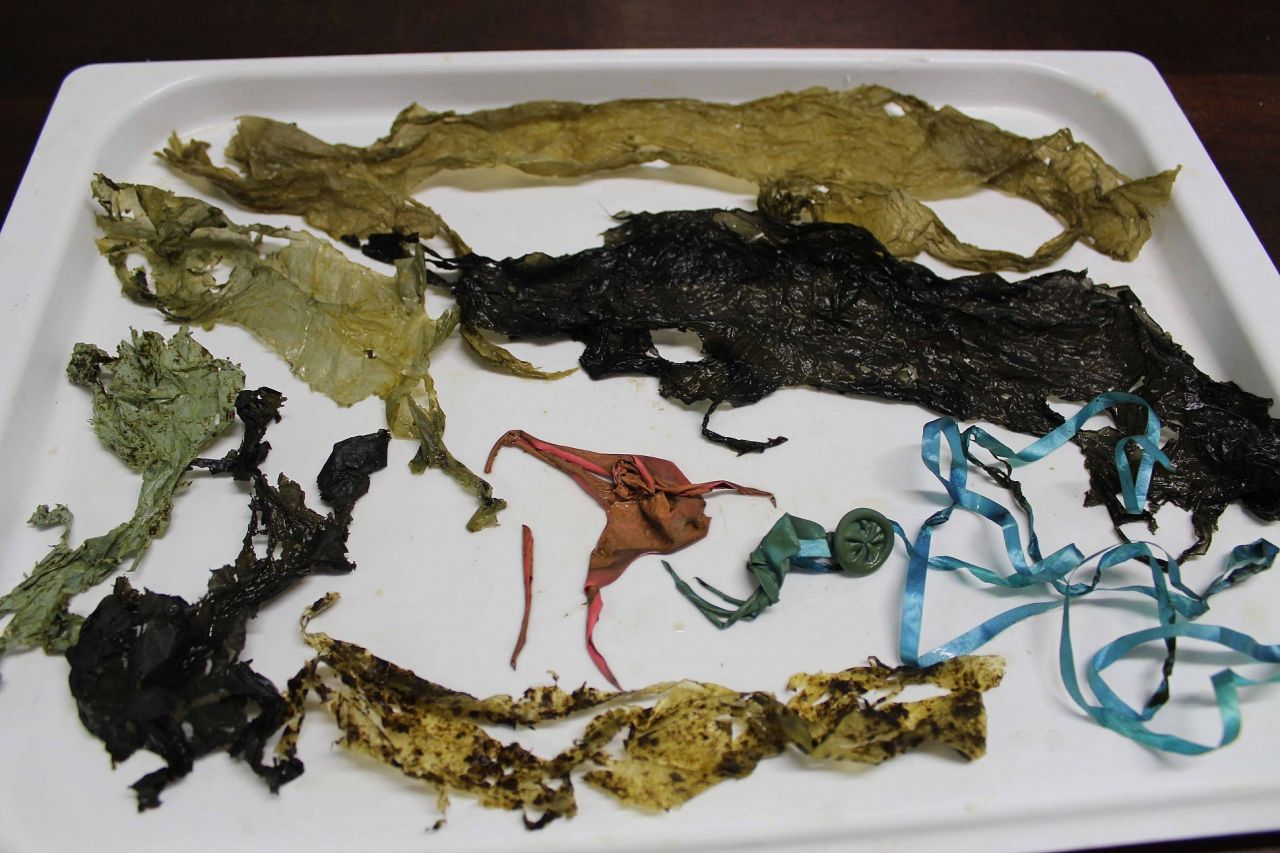
Then on 6 January, Bob pooed out a whole pile of plastic (in the above image). This included pieces of balloons, some still attached to their string and several other large bits of plastic.
Turtles often mistake floating plastic for food. Marine debris from discarded plastics is building up in our oceans and poses a significant threat to turtles and other wildlife. Ingested plastic causes bowel obstructions and has caused fatalities in whales, birds and turtles while many other marine animals are at risk.
Amazingly Bob has healed so well that you can hardly see where the fracture site was and Bob’s eyesight is also gradually returning. Incredibly the turtle now feeds by itself and weighs a wonderful 18.8kg.
Our primary aim is to release Bob, but this will only be determined at a much later stage and will be dependent on Bob’s health and eyesight.
We will keep you posted.
Related News
Sign up to our Newsletter
Receive monthly news, online courses and conservation programmes.



